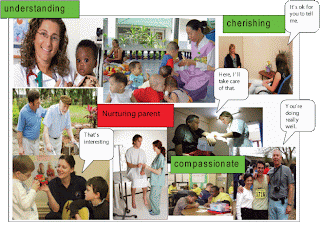Borderline arrest comes from the term Borderline personality disorder. The behavioural criteria for which are more useful than the label. Many people particularly teenagers manifest some of these behaviours at some time or another, hence the term border line arrest like a cardiac arrest. You'll come across these kinds of behaviour in the classroom. Even more in PRUs and behavioural units.
Diagnostic Criteria for 308.83 Borderline Personality Disorder (DSM-IV)
• Frantic efforts to avoid real or imagined abandonment
• A pattern of instable and intense interpersonal relationships characterised by alternating extremes of idealisation and devaluation
• Identity disturbance markedly and persistently unstable self-image or sense of self.
• Impulsivity in at least two areas that potentially self-damaging e.g. Spending, sex, substance abuse, reckless driving, binge eating.
• Recurrent suicidal behaviour, gestures or threats or self-mutilating behaviour.
• Affective instability due to marked reactivity of mood e.g. Intense episodic dysphoria, irritability or anxiety usually lasting a few hours and rarely more than a few days.
• Chronic feelings of emptiness
• Inappropriate intense anger or difficulty controlling anger e.g. frequent displays of temper, constant anger, recurrent physical fights
• Transient stress related paranoid ideation or severe disassociative symptoms
Ideas for working with borderline behaviour
Injunctions are- Don’t grow up, don’t think, don’t make it, don’t be close or trust.
Driver Try hard (don’t get started, don’t finish)
Borderline behaviour is about dumping rage or to be taken care of.
Borderlines escalate a victim position and invite you to persecute or rescue.
They are afraid to venture out for fear of losing the people upon whom they feel dependent. They are also afraid of getting too close to those people for fear of being engulfed.
The borderline triad -self-activation leads to abandonment depression which in turn leads to acting out.
They act out in a way to distract themselves from their feelings.
Work from a position that the client\student is a fully capable , competent individual who is able to behave in a mature , responsible manner. On occasions when the client doesn't do this, you can confront the client by questioning why not.
Confrontations need to come from the adult ego state, by raising questions about how the client makes sense of her acting out behaviour. As you raise adult questions about the client’s behaviour, this encourages the client to use her own adult to look at her behaviour and realise that it doesn't make sense. Slowly over time the client incorporates that stance and learns to use her Adult to limit the acting out.
‘What do you think this is all about?’
‘How do you make sense of this?’
‘What would happen if you hurt someone?’
‘Would you be able to do this at work or in town?’
In many ways you are holding the position of competence that the client is not yet in a position to hold for herself
You become an auxiliary Adult ego state for the client
The less you do the more the client has to do.
As the client has to take the lead, it requires her to self-activate, which brings up the abandonment fears. The client then acts out to avoid them. Through adult confrontation, the pattern can be identified and contained.
The abandonment depression is made up of intense separation anxiety, homicidal rage and suicidal despair.
It is easy for you to project your own unresolved issues on to the client and act out your own rescuing fantasies
The borderline relates by projection.
Stay neutral and objective
Grounding techniques which help a client become aware of their physiological processes
Eating mints, physical relaxation, listening to music.
In the case of incapacitation and violence prepare in advance a series of dealing with emotional crises.e.g ice cubes held on the arm as opposed to cutting up. Team teach restraining protocols.
Remind client that is ok to feel both bad and good about someone at the same time.
Check how they receive a positive stroke to see if they redefined it as negative.
Some theorists view BPD as being a special variant of post traumatic stress disorder which affects the early and developing psyche.
Thanks to Mark Widdowson's articles in Transactions -Journal of the Institute of Transactional Analysis Winter 2004.











